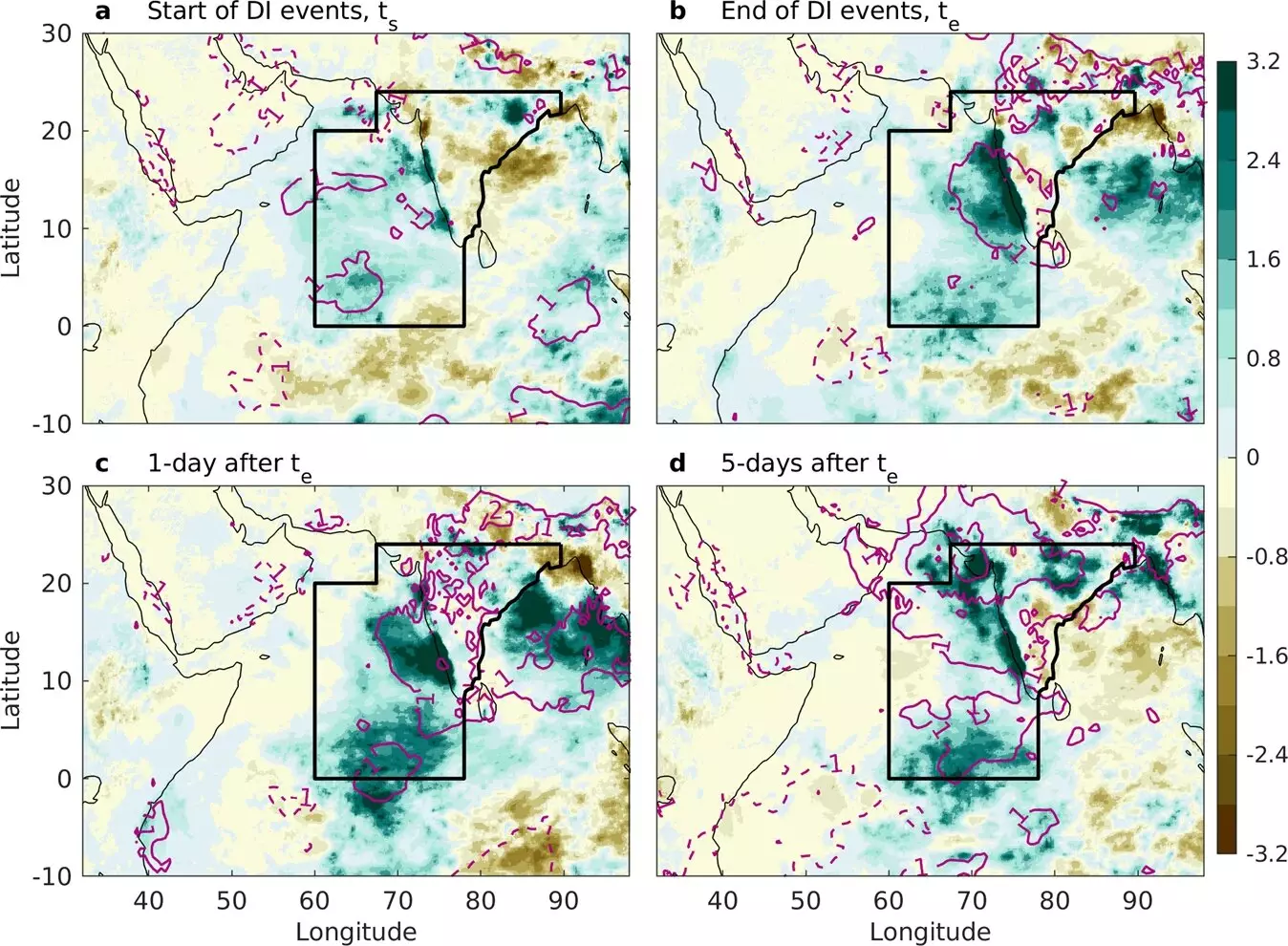In 2018, the state of Kerala in India experienced a devastating series of floods that claimed the lives of over 400 people and displaced millions. While monsoon season brings heavy rainfall to tropical Asia, the ability to predict severe flooding has been a longstanding challenge. However, recent research conducted by the Weizmann Institute of Science has shed new light on this phenomenon. Dr. Shira Raveh-Rubin and Dr. Deepika Rai led a study that discovered a surprising factor that may help predict intense rainfall: the arrival of dry air. This groundbreaking research presents an opportunity to extend the forecast window and improve flood warnings, potentially saving countless lives in flood-prone regions like India and Bangladesh.
India experiences monsoon rains from July to September, a period characterized by complex and multifaceted weather patterns influenced by global jet streams and other factors. The Weizmann study revealed the existence of a subtype of airstream known as dry intrusions, which consist of cold, dry air. Dry intrusions were previously associated with temporary breaks in the monsoon season, leading to dry spells. However, Raveh-Rubin and Rai’s research challenged this assumption.
Analyzing 40 years of data on dry intrusions in the Indian subcontinent, the researchers found that these intrusions were followed by an increase in rainfall, rather than dry weather. On average, the precipitation saw a 17% increase, and in some cases, the rise exceeded 100%. This unexpected outcome prompted the researchers to investigate the underlying mechanisms behind this phenomenon.
The Model Explaining the Increase in Rainfall
To understand how dry air could produce more rain, Raveh-Rubin and Rai employed a model from mechanical physics. This model involved tracking the movement and changes in temperature, location, and water content of air packets. Through this approach, the researchers determined that the dry air of the intrusions acts like a sponge, absorbing large amounts of water from the Indian Ocean. As the moisture gap between the ocean surface and the dry air packets increases, more water is transported northward toward the west coast of India on the Arabian Sea. This unique behavior distinguishes equatorial dry intrusions from their overland counterparts and explains why they have been misunderstood in the past.
Raveh-Rubin and her team argue that the overlooked role of dry intrusions in monsoon dynamics stems from the difference in time scales. While monsoon dynamics typically operate on longer time scales of months or years, dry intrusions occur on the scale of days or weeks. This discrepancy has led to a lack of attention and understanding of the impact dry intrusions can have on rainfall patterns and flooding. By bridging the gap between abstract physics and real-life applications, Raveh-Rubin and her team aim to harness the potential of dry intrusion monitoring to enhance flood forecasting.
One of the significant implications of this research is the potential to provide accurate flood warnings to vulnerable regions like India and Bangladesh. With millions of people residing in flood plains, advance warnings are crucial for proper preparation and potential evacuation. Currently, dry intrusion monitoring offers the capability to improve forecasting specific peaks in rainfall that may lead to severe flooding. With this approach, warnings could be extended from a few days to approximately a week, dramatically increasing the time available for preparation.
Continuing Research and Future Outlook
Although this study marks a significant milestone in understanding the relationship between dry intrusions and severe flooding, Raveh-Rubin and her team are not stopping here. Their intention is to further investigate the effects of dry intrusions on Asian monsoons and refine their model. Additionally, they aim to explore the occurrence of dry intrusions in other parts of the world, hoping to uncover similar effects that can aid in predicting heavier rainfall and preventing future floods.
The research conducted by the Weizmann Institute of Science has unveiled a previously unnoticed link between dry air and severe flooding in India. This breakthrough may revolutionize flood forecasting and improve the ability to save lives in flood-prone regions. By understanding the behavior of dry intrusions and their impact on rainfall patterns, scientists can provide more accurate warnings and allow for proper preparation and potential evacuation. The search for new insights continues, as researchers strive to unravel the complexities of monsoon dynamics and apply this knowledge on a global scale to prevent devastating flooding in the future.



Leave a Reply